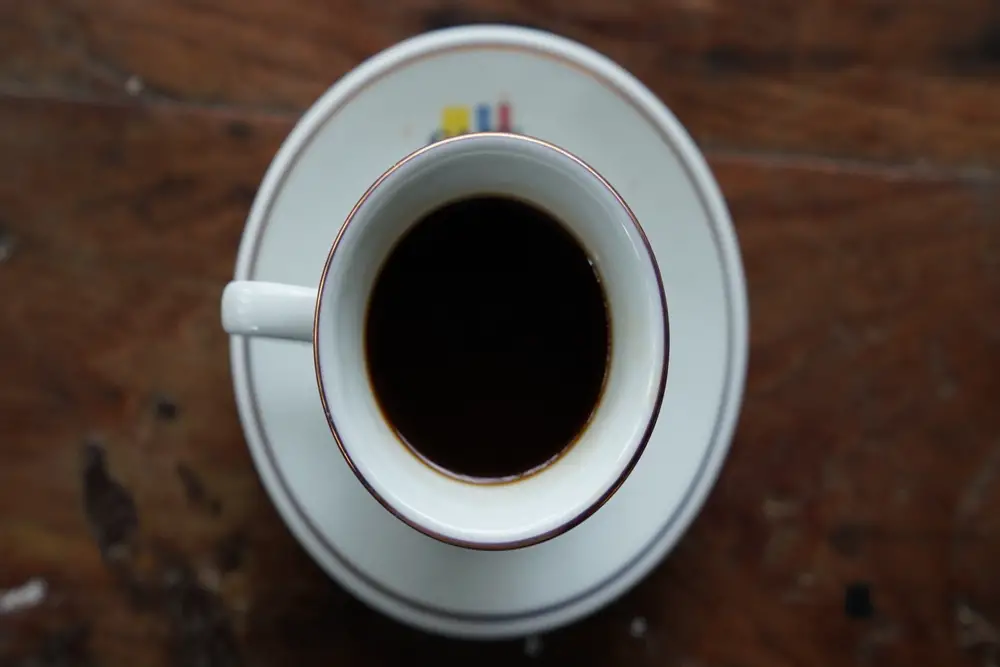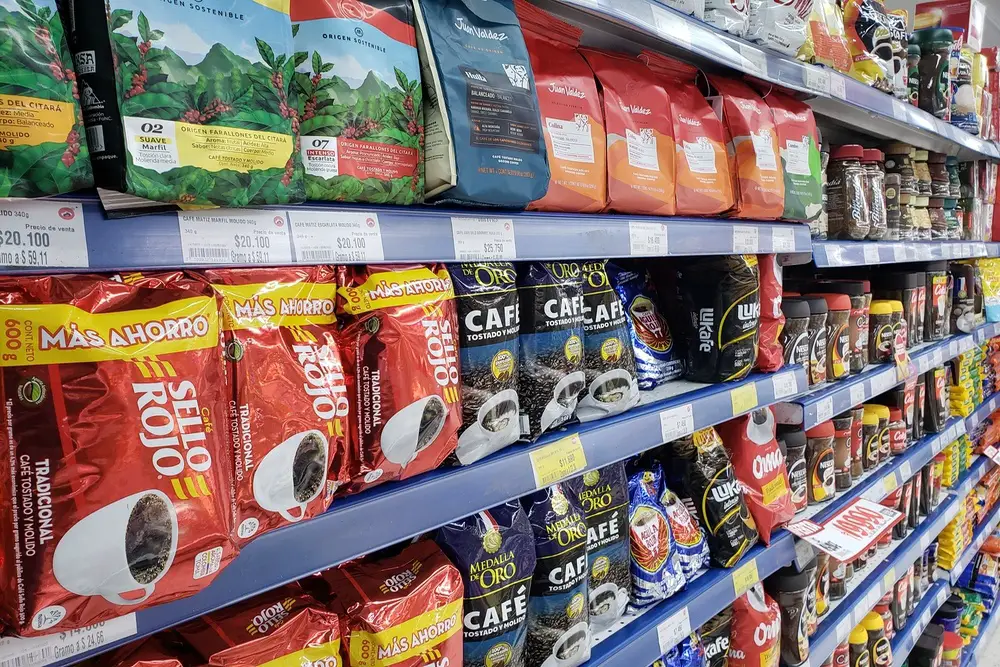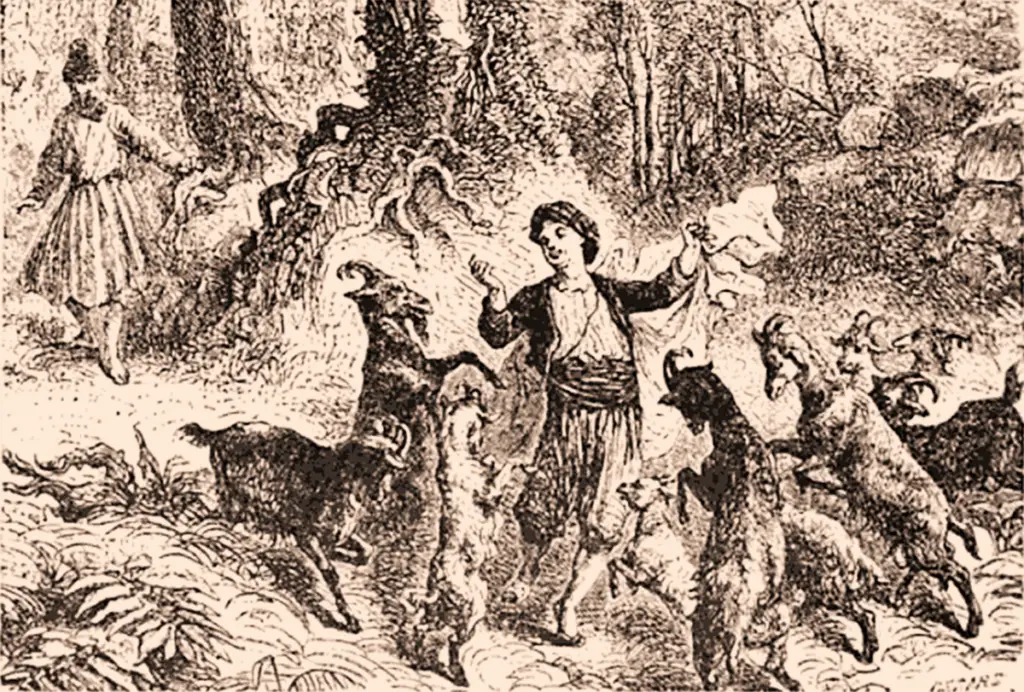The best way to start the day is with a tasty cup of coffee. For many people, this is the daily ritual before the day really begins. But what if the taste experience is suddenly clouded by an unpleasant sour taste?
Table of Contents
Reasons why coffee can go sour
under-extraction of coffee
Insufficient extraction of the coffee can be due to old or poor quality coffee beans, coffee that has been ground too finely, or coffee that has not been ground at all. The longer the coffee is brewed, the more sugar, oils, and other flavoring compounds are extracted, making the coffee taste sweeter. However, if an extraction goes on for too long, the coffee will end up tasting bitter.
When preparing a cup of coffee, the acids are first extracted. So when you start brewing, the coffee is very acidic. And if all of those natural acids aren’t balanced with sugar, oils, and other flavors, it’s too acidic.
Under-roasted coffee beans
Coffee roasting begins with the raw beans. Through a perfect balance of heat, air, rotation and other factors, the roaster turns these raw beans into the coffee we know.
During roasting, the organic raw components of the raw coffee are converted into delicious aromas and the sugar is caramelized.
If the beans are over-roasted, the coffee will burn and become bitter. On the other hand, if the coffee beans are roasted too lightly, not all flavors are developed and the acidic taste is not balanced by them. You can think of it like a meal that is only half-cooked.
Light roast coffee is less roasted than dark roast coffee and is therefore considered to be more acidic than dark roast coffee.
Stale coffee beans
Coffee can go sour if the beans used are very old (more than 6 months), if they have been exposed to moisture after roasting, or if they have dried out from direct sunlight.
Coffee storage is also very important here. Even the best coffee can spoil if stored in a humid environment or in an unsealed container. The aromatic compounds that make the coffee edible can thus evaporate. When coffee is stored at temperatures above 24°C (75°F) , the shelf life decreases rapidly, aromas are volatilized and the sour taste becomes dominant.
Coffee beans slowly degrade over time. Aromatic oils evaporate and natural sugars and oils are broken down.
In general, coffee beans begin to change in flavor 3 to 4 weeks after roasting. After a few more weeks, they get pretty sour. A stale coffee possesses a lemony , citrusy flavor.
Insufficient water temperature
As with under-extraction, using insufficient hot water during the brewing process will always result in sour coffee. Because the cooler the water, the fewer aromatic substances are extracted from the coffee.
The temperature of the water can affect the acidity of the coffee in a number of ways. If the water is too hot, there is a risk that the coffee will burn, which can also lead to a sometimes sour taste.
The secret of cold brew coffee is that the use of cold water is offset by a significant increase in extraction time to more than 10 hours. In contrast, brewing methods like French Press or espresso rely heavily on the use of hot water.
The difference between sour and bitter
Sour and bitter coffee tastes are the two opposite extremes of inferior or unpleasant coffee. Acidity tends to appear in coffee that hasn’t been fully extracted, while bitterness can appear if the coffee has been over-extracted.
Acidity and bitterness also vary depending on the roast profile that the coffee beans have been subjected to. The darker a coffee is roasted, the more bitter flavors are released. The darker the roast, the more bitter the finished brew.
On the other hand, while a light roast has a higher caffeine content, the bitter taste of a dark roast is much stronger than the caffeine content of a light roast. The coffee beans used for dark roasts and espressos are typically Robusta beans, which contain much more caffeine than the Arabica variety.
Difference between the acidity of coffee and the sour taste
Coffee is known to be naturally acidic, and that’s a good thing. A pleasant acidity is the difference between a bland coffee and a flavorful coffee.
There are four main types of acids found in coffee:
- Citric Acids: Citrus notes such as lemon, lime or orange
- Malic Acids: Notes of green apple
- Phosphoric acids: sweet and sour notes
- Acetic acids: similar to vinegar
Coffees from around the world contain varying amounts of acids that contribute to the overall flavor profile of the cup. For example, Brazilian beans tend to have lower acid levels, while coffee beans from East African countries such as Zambia or Ethiopia have higher acid levels.
How to prevent coffee from tasting sour?
Below are 5 tips, some of which will surely be of use to you.
Grind the beans finely
If the grind is too coarse, the water will not be able to extract enough flavor from the coffee and you will end up with an acidic, under-extracted coffee. Therefore, the simplest solution to this problem is to grind the coffee finer.
If you grind your coffee beans yourself at home instead of buying bags of ground coffee, you should opt for a finer grind.
However, if you don’t have a coffee grinder at home or you just want to skip this coffee-making step, you can look around for ground coffee suppliers that fit your needs.
Different types of coffee beans taste better when brewed with different grinds, brew times, and methods. For example, while coarsely ground coffee made with a French press produces a good cup of coffee, an espresso made from the same beans tastes acidic.
The finer the grind, the greater the surface area of the coffee and the greater the amount of exposed coffee for the water to interact with during brewing. This allows more oils, acids, sugars and flavors to be released into the water.
Increase brewing time
If you buy ground coffee instead of whole beans, it’s not possible to grind it finer at home. Because coarser ground coffee requires a longer brewing time to properly extract the flavors, the simplest solution is to increase the brewing time.
The longer the brewing time, the more aroma molecules and various compounds are extracted from the coffee.
As already explained, oils and acids, such as e.g. B. citric acid extracted. These are important for the taste of the coffee. However, when only these acidic compounds are present, the taste becomes unpleasant.
However, coffee should not be extracted for too long either. After fats, acids, sugars and other aroma molecules are extracted from the coffee, prolonged brewing causes the water to begin to break down the plant fibers in the coffee, resulting in a bitter taste.
There are several ways to increase the brewing time. If you e.g. B. Using an immersion coffee maker, like a French press, you can add at least 20 seconds. If you prefer the drip method, pour the water a little more slowly to increase the overall duration of the interaction between the coffee and the water.
Adjusting the ratio of coffee to water
If you have already set the grind and brew time, there could be a problem with the amount of water used. The right amount of water and ground coffee may vary depending on the brewer or brewing method. However, the sour taste that comes from under-extraction can be a mismatch.
By making sure you use enough water to extract the coffee, you can create a more balanced brew and counteract the acidity. Conversely, bitterness can be a sign that you’re not using enough coffee, since each bean has to work harder when there’s not enough of it .
Also, adding more water directly increases the brewing time, resulting in a more even extraction, resulting in a cup of coffee with mild acidity and sweet flavor notes.
Check the water temperature
The water should not be poured over the coffee just after it has reached the boiling point as this can cause a bitter taste. However, if the water is too cool, there will be insufficient extraction, resulting in acidic flavors.
The National Coffee Association recommends a brewing temperature (except for espresso or cold Brew ) from 90°C to 96°C (194° – 205° Fahrenheit). This is below the boiling point of water (100°C).
You can let the water cool down a bit before pouring it over the coffee.
However, if you live in a high-altitude area where the water boils at around 90.5°C, it’s advisable to use it immediately after boiling so it doesn’t cool down.
Put salt in the coffee
Adding salt to coffee softens the bitterness and acidity, allowing other flavors, such as sweetness, to become more prominent.
In cultures around the world, adding salt to coffee has been a tradition for decades. In Taiwan, for example, “sea salt coffee,” a salted milk foam on top of an iced Americano , is a tradition.
At the bile level in the human body, sodium ions bind to the salt receptors on the tongue, inhibiting the perception of acidity to balance out flavors.
This means that the sweetness of the coffee is naturally enhanced by the addition of salt. For this reason, some cocktails often have salt added to the rim of the glass to bring out other flavors in the drink.
Conclusion
A sour-tasting coffee is not always due to bad coffee beans. Test different possible sources of error before discarding good beans. You can also improve your coffee-making skills at the same time.



